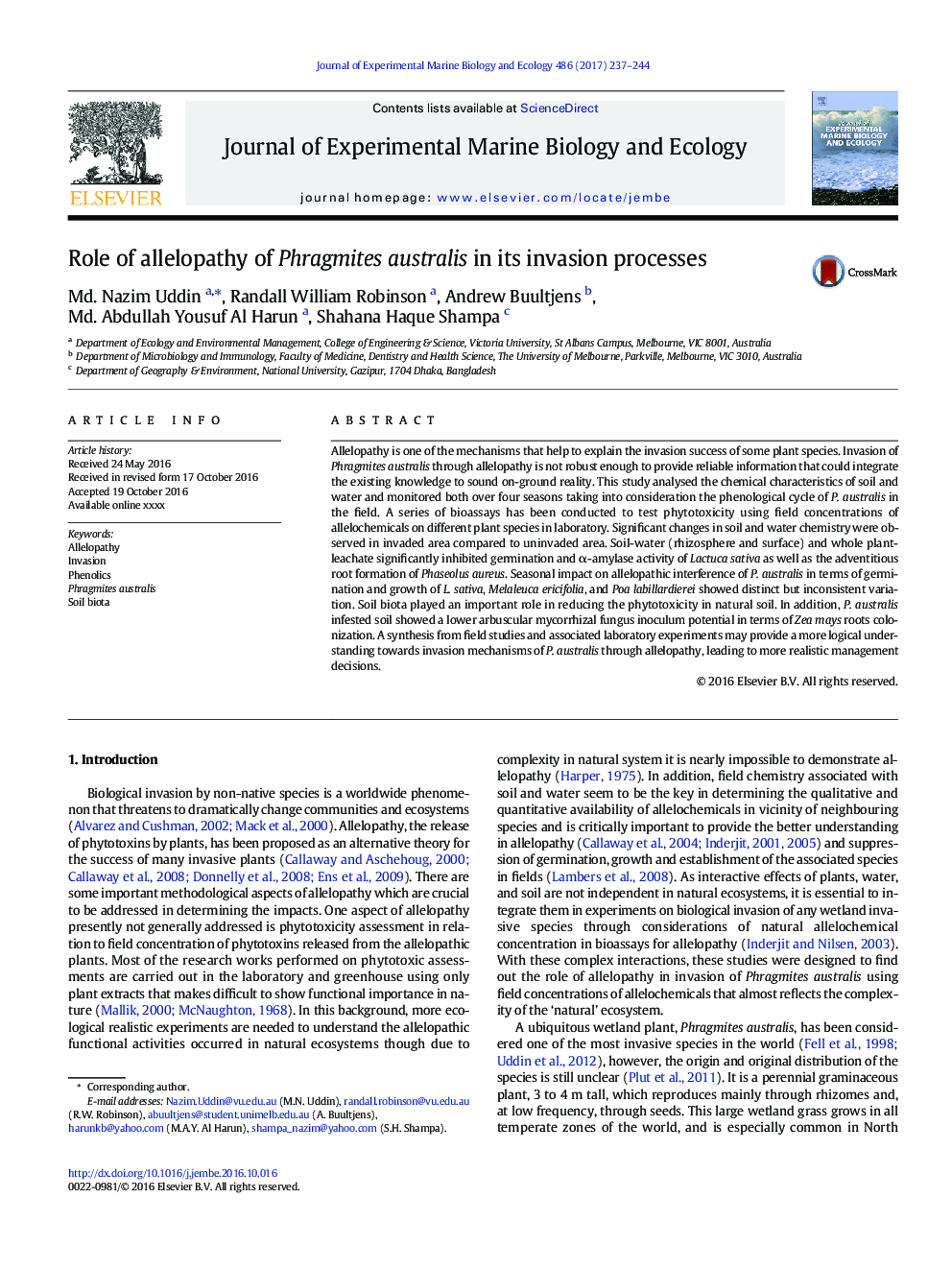| Article ID | Journal | Published Year | Pages | File Type |
|---|---|---|---|---|
| 8849041 | Journal of Experimental Marine Biology and Ecology | 2017 | 8 Pages |
Abstract
Allelopathy is one of the mechanisms that help to explain the invasion success of some plant species. Invasion of Phragmites australis through allelopathy is not robust enough to provide reliable information that could integrate the existing knowledge to sound on-ground reality. This study analysed the chemical characteristics of soil and water and monitored both over four seasons taking into consideration the phenological cycle of P. australis in the field. A series of bioassays has been conducted to test phytotoxicity using field concentrations of allelochemicals on different plant species in laboratory. Significant changes in soil and water chemistry were observed in invaded area compared to uninvaded area. Soil-water (rhizosphere and surface) and whole plant-leachate significantly inhibited germination and α-amylase activity of Lactuca sativa as well as the adventitious root formation of Phaseolus aureus. Seasonal impact on allelopathic interference of P. australis in terms of germination and growth of L. sativa, Melaleuca ericifolia, and Poa labillardierei showed distinct but inconsistent variation. Soil biota played an important role in reducing the phytotoxicity in natural soil. In addition, P. australis infested soil showed a lower arbuscular mycorrhizal fungus inoculum potential in terms of Zea mays roots colonization. A synthesis from field studies and associated laboratory experiments may provide a more logical understanding towards invasion mechanisms of P. australis through allelopathy, leading to more realistic management decisions.
Related Topics
Life Sciences
Agricultural and Biological Sciences
Aquatic Science
Authors
Md. Nazim Uddin, Randall William Robinson, Andrew Buultjens, Md. Abdullah Yousuf Al Harun, Shahana Haque Shampa,
